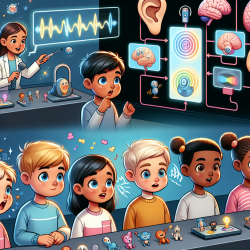As superintendents of schools navigate the complex landscape of education today, the dual challenges of ensuring staff well-being and student safety have never been more paramount. In an era where burnout is increasingly prevalent among educational staff, finding sustainable and effective solutions is crucial. Telepractice, particularly in the realm of therapy services, emerges as a beacon of hope, offering a pathway to address these challenges head-on.
Burnout among school staff, a state of physical and emotional exhaustion often caused by prolonged stress, is a growing concern. It can lead to a decrease in employee effectiveness, increased absenteeism, and ultimately, a negative impact on student learning and safety. As leaders in education, superintendents must prioritize strategies that safeguard the well-being of their staff while maintaining a secure learning environment for students.
Enter telepractice—a mode of delivering therapy and other educational services online. This innovative approach has shown promising results in alleviating staff burnout and enhancing student safety. Here's how:
- Flexibility and Work-Life Balance: Telepractice jobs offer unparalleled flexibility, allowing therapists and educators to work from anywhere. This flexibility can significantly reduce stress and prevent burnout, contributing to a healthier, more satisfied workforce.
- Access to Specialized Services: Schools often face challenges in staffing specialized therapists, such as speech-language pathologists or occupational therapists. Telepractice bridges this gap, ensuring students receive the services they need without the logistical barriers of on-site therapy. This not only supports student well-being but also alleviates the pressure on school staff to fill these specialized roles.
- Enhanced Safety Measures: In today's world, the safety of students and staff is a top concern. Telepractice minimizes physical interactions, reducing the risk of transmitting illnesses. This aspect of telehealth in schools is particularly relevant in the context of ongoing global health concerns, offering a safer alternative to traditional therapy delivery methods.
- Continuity of Services: Unexpected events, such as weather-related school closures or health crises, can disrupt the delivery of essential therapy services. Telepractice ensures that students continue to receive the support they need, regardless of circumstances, promoting a stable and consistent learning environment.
Implementing telepractice in schools is not without its challenges. Concerns about technology access and digital literacy among staff and students, as well as ensuring the confidentiality and security of online sessions, are valid. However, with careful planning and the right support, these hurdles can be overcome, paving the way for a more resilient, efficient, and safe educational system.
As superintendents consider the next steps for their districts, the adoption of telepractice services like TinyEYE offers a strategic solution to combat burnout and enhance safety. By embracing telehealth, schools can not only address immediate challenges but also lay the groundwork for a more sustainable and effective educational environment.
In conclusion, the journey toward alleviating burnout and ensuring safety in schools is multifaceted, requiring innovative solutions and leadership commitment. Telepractice stands out as a promising avenue, offering benefits that extend to staff, students, and the broader educational community. For superintendents seeking to make a meaningful impact, exploring telepractice jobs and online therapy services may just be the next critical step.










